- Details
- Chris R. Keller
- Uncategorised
- Hits: 1243
This is a handy guide to make it easier for business owners, CMO's and marketing managers to know what to expect and pick the best website test for their needs.
Read on for website tests you can complete for free easily on your own, as well as many other details and links to investigate if you want to research further.
1. Website Tests
a. How Do I Test My Website?
b. Types of Website Tests
c. Website Sample Results
d. What Is Being Assessed On Your Website
e. Benefits Of A Website Test
2. Website Tests vs Website Audits
3. Website Audits
4. SEO Analysis
5. How To Test Website Quality
6. How To Check If A Website Is Slow Or Not
7. What Is A Website Test
8. How To Measure Website Performance
1. Website Tests
a. How Do I Test My Website?
b. Types of Website Tests
There are many types of website tests for business owners, CMO's and marketing managers depending on what they would like improved or analyzed about their website. The website tests below are designed to do different things, based on what each test is built for.
Website Test For Overall Effectiveness
[insert profitworks url]
Website Traffic Tests
Website Usability Tests
Website Conversion Optimization Tests
Website Speed Test
Here is a list of the best website speed test tools
Google Pagespeed Insights Test - https://pagespeed.web.dev/
The great google page speed test tool gives you
Website Security Tests
2. Website Sample Results
3. Website Audits
Comprehensive Website Audits
Free SEO Audits
4. SEO Analysis
Consulting Calls
SEO Checker Tools
https://neilpatel.com/seo-analyzer/
Pricing:
https://www.seobility.net/en/seocheck/
Pricing:
Pricing:
https://www.semrush.com/seo/
Pricing:
5. How To Test Website Quality
To test website quality, you can employ various methods and techniques to evaluate different aspects of the website. Here are some key areas to consider when testing website quality:
-
How To Do Usability Testing: Test the website's usability to ensure it is easy to navigate, intuitive, and user-friendly. Conduct user testing sessions where participants perform tasks on the website and provide feedback on their experience. Look for any usability issues, such as confusing navigation, unclear instructions, or difficulty in finding information.
-
How To Do Functional Testing: Check the website's functionality to ensure that all features and functionalities are working as intended. Test forms, buttons, links, search functionality, interactive elements, and any other dynamic components. Verify that error handling and validation are implemented correctly.
-
How To Do Cross-Browser Compatibility: Test the website on different web browsers (such as Chrome, Firefox, Safari, and Edge) and ensure it displays correctly and functions properly across multiple platforms. Pay attention to any inconsistencies in layout, styling, or functionality.
-
How To Do Responsiveness: Evaluate the website's responsiveness by testing it on different devices with varying screen sizes, such as desktops, laptops, tablets, and smartphones. Ensure that the website adjusts and displays appropriately on different screen resolutions and orientations.
-
How To Do Performance Testing: Assess the website's performance by measuring its loading speed, responsiveness, and overall efficiency. Use tools like Google PageSpeed Insights, GTmetrix, or Pingdom to analyze performance metrics such as page load time, time to first byte, and rendering speed. Identify any bottlenecks that may affect the user experience.
-
How To Do Content Review: Review the website's content for accuracy, relevance, and clarity. Check for spelling and grammar errors, broken links, outdated information, or any discrepancies in the content. Ensure that the content is properly formatted and optimized for readability.
-
How To Do Accessibility Testing: Evaluate the website's accessibility to ensure it is inclusive and usable by people with disabilities. Test for compliance with accessibility guidelines such as WCAG (Web Content Accessibility Guidelines). Check for keyboard navigation, alternative text for images, proper heading structure, and other accessibility considerations.
-
How To Do Security Testing: Verify that the website has proper security measures in place. Check for SSL encryption, secure data transmission, protection against common vulnerabilities (e.g., SQL injection, cross-site scripting), and adherence to best security practices.
-
How To Do SEO testing: Evaluate the website's search engine optimization (SEO) aspects to ensure it is optimized for search engines. Check for proper meta tags, relevant keywords, structured data, optimized URLs, and other SEO best practices. The best way to do this is through a free SEO checker or to have a professional SEO Audit completed
-
How To Do Sales & Lead Performance Monitoring: Implement sales & lead performance monitoring tools and analytics (such as Google Analytics) to continuously track and monitor website performance, user behavior, revenue won, conversion rates, and other relevant metrics. The key to getting great sales results from a website is to review the sales performance of your website regularly and have an expert continually working on your website to increase the sales results from it. For help with this you can work with a digital marketing agency like this one.
By conducting thorough testing in these areas, you can ensure that your website meets high-quality standards in terms of usability, functionality, performance, accessibility, and overall user experience.
6. How To Check If A Website Is Slow Or Not
To check if a website is slow or not, you can follow these steps:
-
Manual Evaluation: Visit the website yourself and navigate through its pages to assess its loading speed and overall performance. Pay attention to how long it takes for the pages to load, if there are any noticeable delays, or if there are any performance issues while interacting with the site.
-
Use Online Speed Testing Tools: Several online tools can analyze website performance and provide detailed reports on its speed and optimization. Some popular tools include:
- Google PageSpeed Insights: It evaluates both mobile and desktop versions of your website, providing a performance score along with optimization suggestions.
- GTmetrix: This tool provides insights into various performance metrics, including page load time, page size, number of requests, and more.
- Pingdom: It offers a comprehensive analysis of your website's performance, including page load time, performance grades, and suggestions for improvement.
-
Browser Developer Tools: Most modern web browsers come with built-in developer tools that can help you evaluate website performance. You can access these tools by right-clicking on a webpage and selecting "Inspect" or by pressing the F12 key. Within the developer tools, look for the "Network" tab, which provides detailed information about the loading of various resources, including their timing and size.
-
Mobile Testing: It's essential to assess your website's performance on mobile devices since mobile users make up a significant portion of internet traffic. Use tools like Google PageSpeed Insights or WebPageTest to evaluate how your website performs on mobile platforms and identify potential optimization opportunities.
-
User Feedback: Consider gathering feedback from website users or visitors. This can be done through surveys, feedback forms, or user testing sessions. Ask them about their experience with the website, including any perceived slowness or performance issues they encountered.
Remember that website performance can be affected by various factors, such as server configuration, content optimization, caching, and more. It's important to perform regular evaluations and monitor website performance to ensure an optimal user experience.
7. What Is A Website Test
A website test refers to the process of evaluating and examining various aspects of a website to assess its performance, functionality, usability, or overall quality. Website testing is conducted to identify and address any issues, bugs, or usability concerns that may affect the effectiveness of the website.
The specific output may vary depending on the type of test being performed and the tools or methodologies used. Here are some common outputs of website tests:
- Recommendations and Actionable Insights: The output of website testing often includes recommendations and actionable insights based on the findings. These recommendations aim to address the identified issues, improve the website's quality, and enhance the user experience. They may include specific steps, best practices, or suggested changes to fix any problems and optimize the website.
-
Test Reports: Test reports provide a summary of the test results, including how the website scored for each catetory measured. Usually these reports will output a letter grade, score out of 100 or a qualitative assessment. These reports will often highlight issues that need to be corrected with a website to get better results.
-
Bug Reports/Defect Logs: If any functional or usability issues are discovered during testing, bug reports or defect logs are created. These documents typically outline the problem, its severity, steps to reproduce it, and any additional information necessary for developers or stakeholders to understand and resolve the issue.
-
Speed Metrics: For performance testing, the output includes various performance metrics that measure the website's speed, responsiveness, and efficiency. This may include metrics like page load time, server response time, render time, memory usage, network requests and waterfall chart of server requests. The results are typically presented in tabular or graphical formats for easy interpretation.
-
Usability Feedback: Usability testing often involves gathering feedback from users who interact with the website. The output includes observations, comments, and suggestions provided by users during the testing sessions. This feedback can highlight usability issues, pain points, or areas of confusion that need to be addressed.
-
Compatibility Reports: In compatibility testing, the output includes a detailed report on the website's compatibility across different browsers, operating systems, and devices. It identifies any rendering issues, layout inconsistencies, or functional discrepancies observed during the testing process.
-
Security Assessment: Security testing may result in a security assessment report that outlines the vulnerabilities, risks, and recommendations for improving the website's security. It may include details of identified vulnerabilities, their potential impact, and suggested mitigation strategies.
-
Accessibility Evaluation: Accessibility testing generates a report that assesses the website's compliance with accessibility standards, such as WCAG. It identifies accessibility issues, provides guidelines for improvement, and may include a prioritized list of accessibility enhancements.
The output of a website test is essential for business owners, CMO's and marketing managers. A website test helps guide decision-making, prioritize tasks, and ensure that necessary improvements are made to enhance your website's overall quality and performance.
8. How To Measure Website Performance
Measuring website performance for marketing effectiveness involves tracking metrics that indicate how well your website is supporting your marketing goals and driving desired outcomes, like generating leads or generating sales. There are a number of ways to measure a website's performance but here are the most seven important factors to looks at.
- Revenue Dollars: How much extra revenue is your business making each year because you have a website. Or another way to phrase this is how much new revenue would your business lose out on winning if it did not have a website.
-
Conversion Rate: The conversion rate measures the percentage of website visitors who take a desired action, such as making a purchase, filling out a form, subscribing to a newsletter, or downloading content. It provides insight into how effective your website is at turning visitors into customers or leads. You can track conversion rates using tools like Google Analytics, which allows you to set up goals and track conversions.
-
Bounce Rate: The bounce rate represents the percentage of visitors who leave your website without navigating to any other page. A high bounce rate may indicate that visitors aren't finding what they're looking for or that your website's messaging or design needs improvement. Monitoring bounce rates can help you optimize your landing pages and improve user engagement.
-
Time on Page: Time on page measures the average amount of time visitors spend on a specific page. It can indicate the level of engagement and interest visitors have in your content. Longer average time on page generally suggests that visitors find your content valuable and engaging. Google Analytics and other web analytics tools provide this metric.
-
Click-through Rate (CTR): CTR measures the percentage of visitors who click on a specific call-to-action (CTA) or link. It is commonly used to measure the effectiveness of advertising campaigns, email marketing, or specific CTAs on your website. You can track CTR for ads through platforms like Google Ads or for website links using tools like Google Analytics.
-
Traffic Sources: Understanding where your website traffic is coming from can provide valuable insights into the effectiveness of your marketing efforts. Tools like Google Analytics allow you to track traffic sources such as organic search, direct traffic, referral traffic from other websites, social media, or paid advertising. By analyzing these sources, you can determine which channels are driving the most traffic, the amount of website traffic and website sales you are getting from each channel compared to how much you are spending on that channel. This informatoin then allows you the business owner to adjust your marketing strategies accordingly.
-
Return on Investment (ROI): While not directly related to website performance metrics, measuring ROI is crucial to assess the effectiveness of your overall marketing efforts. By tracking the revenue generated and cost savings resulting from your website activities (e.g., hosting, domain fees, content creation fees, conversion optimization fees, Google Ads, Meta Ads, etc), you can evaluate the return on your marketing investment.
It's important to set specific marketing goals and KPIs that align with your business objectives. Regularly monitoring and analyzing these metrics will help you gauge the effectiveness of your website in supporting your marketing initiatives and overall business goals, identify areas for improvement, and make data-driven decisions to optimize your marketing strategies and total business results.
- Details
- Lauren Macri
- Uncategorised
- Hits: 3756
Why is YouTube Video Engagement Important?
Guest Post By Paul Stainton

Video engagement is a metric that gauges the total number of YouTube videos or channel views. As a result, YouTube video engagement is crucial to monitor as it determines both popularity and reaches.
And why is it important to perform well on YouTube? Although you may think of it as just a place to watch cat videos, with its approximately 2.6 billion active users, YouTube is considered the second most popular search engine in the world.
It is also the most trusted social commerce platform in the US, according to eMarketer.
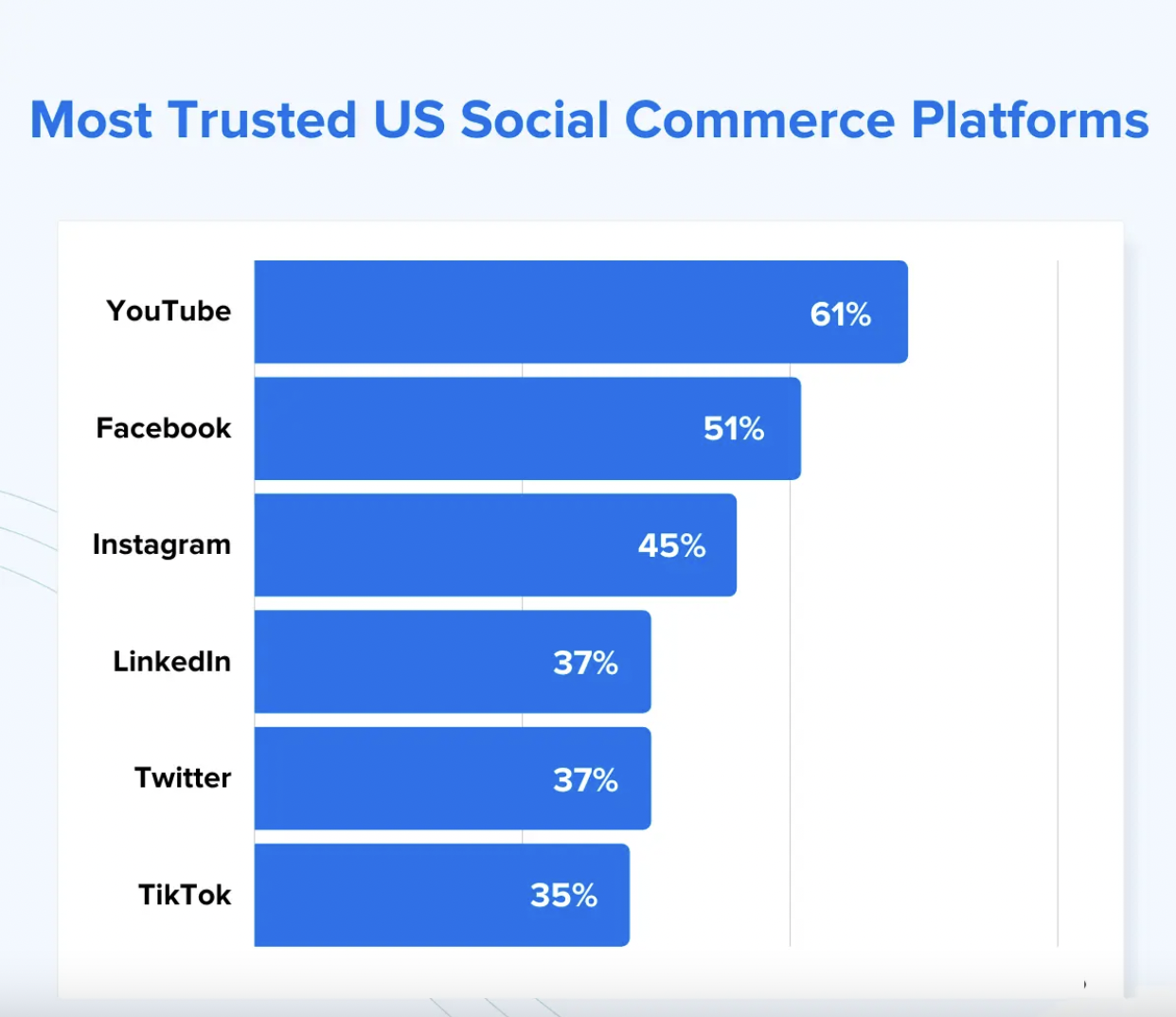
Why Is YouTube Video Engagement Important?
The purpose of YouTube video engagement is to monitor the number of visitors and other variables. Finding the engagement rate–which is part of YouTube analytics–is the critical outcome of this exercise. To raise your engagement rate, you need to have a reasonable amount of clicks, shares, comments, and likes (which is a crucial point for an aspiring YouTuber).
The usual method for calculating engagement rate is adding the total number of likes, dislikes, shares, and comments and dividing it by the total number of subscribers. So, why is it essential to determine engagement or engagement rate?
Instead of just focusing on specific categorical variables like the number of likes, comments, shares, etc., the engagement rate is an all-inclusive metric that offers a more detailed account of content effectiveness on your YouTube channel. It is a valuable statistic to assess the degree of audience participation and learn more about the value of the content.
YouTube engagement rates and other metrics are found in the YouTube Dashboard. If you’re looking to save time on manually pulling those stats, use a reporting tool with a customizable YouTube Dashboard feature. This will evaluate the effectiveness of your channel and videos and the viewing habits of your audience.
There are various approaches to increasing YouTube engagement. Even well-known brands haven't always used the right tactics for creating and distributing their videos on the world's biggest video platform. After all, there are a lot of factors for video creators to consider. Learn how to enhance YouTube video engagement in the following section.
8 Ways to Increase YouTube Video Engagement in 2022

Follow these eight measures below to increase your YouTube video engagement in 2022, boosting your channel’s presence across the network.
1. Explore Topics and Keywords Properly
Many YouTubers don't do proper topical research. When that falls short, you also miss out on keyword research. As with SEO and blogging, keywords are crucial for video marketing. Several tools are available to determine YouTube keywords, which will also assist in creating a compelling topic.
Even if you don’t use a dedicated video keyword research tool, spending a bit of time in the world of keywords can make a big difference in the world of YouTube. After all, what people search for on Google often aligns with how they search on YouTube.
As you can see from the example below, many variations of the same core keyword can be tackled with a YouTube video, so picking the one that aligns best with your target audience and your video strategy is a winning combination.
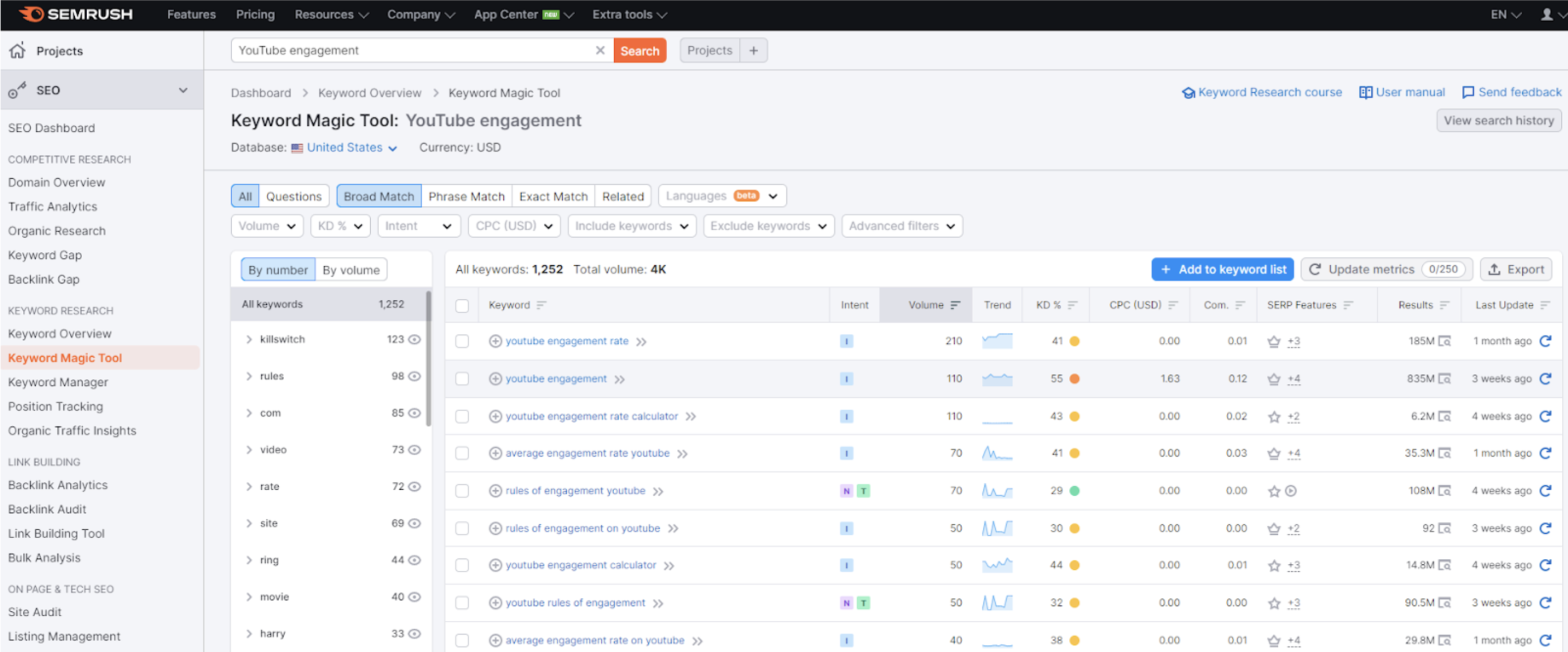
That’s why a keyword tool like Semrush can be invaluable to your YouTube creation, posting, and engagement strategies.
Finding topics and creating relevant YouTube content that will engage your audience makes a finely-tuned video machine that can drive awareness and brand affinity.
Ahrefs Keywords Explorer, Kparser, and Google Trends are popular tools for researching keywords for YouTube. A well-known all-in-one digital marketing tool called Kparser can also assist with topic and tag generation.
2. SEO for YouTube Is Vital
The foundation of the explosive growth in YouTube engagement is SEO. Applying keywords for your video's niche should not be ignored in this SEO process and subsequent keyword optimization. The most popular keywords help the audience quickly reach your videos when enabled.
After all, you want your video to be found by the people who would be interested in its content.
Relevant keywords should be incorporated into your video's title, description, and scripting. This activates the YouTube algorithm and aids in increasing the visibility of your videos. This is especially important to reach a target audience that inputs comparable search queries or keywords.
3. Thumbnails Should Be Engaging
Having a poor thumbnail (or none at all) for your YouTube video makes no sense. According to experts, a stunning bespoke video thumbnail might decide whether a visitor clicks through to your video. Therefore, it’s no surprise that most popular YouTubers concentrate on making attention-grabbing thumbnails.
And it pays off. As you can see from this example, thumbnails grab attention also–typically-grab-engaged watchers.
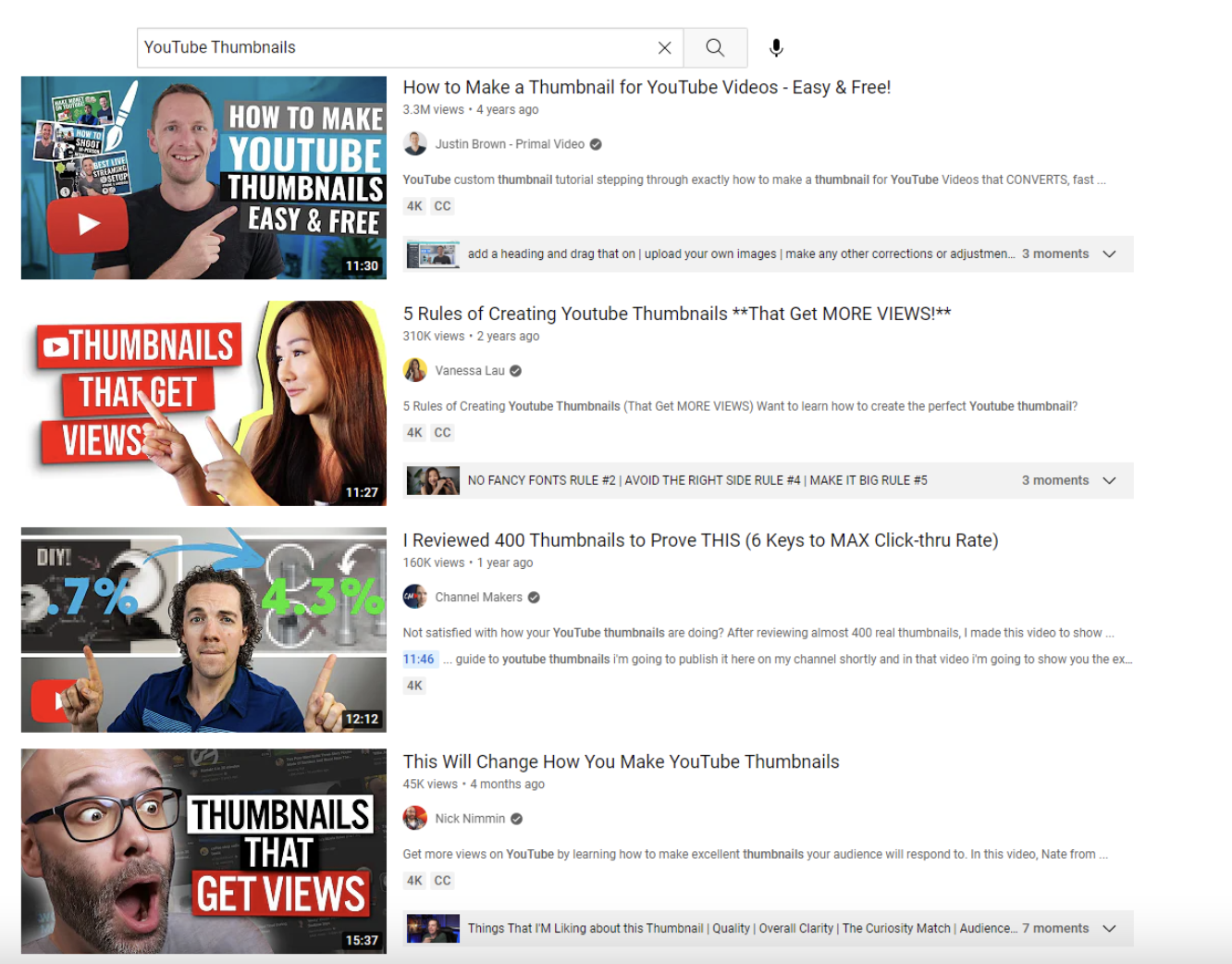
When creating a YouTube thumbnail, the creator has the chance to explain why the audience should pick their video briefly. Therefore, you must put quality time into creating the thumbnail to instantly capture the audience’s eye.
4. Create Short Videos
Short videos are becoming increasingly popular because they are easy and quick to watch, especially if they contain crucial information or humorous aspects. It is vital to cooperate with YouTube's dedicated Shorts feature now that it exists.
Because YouTube is frequently viewed through mobile devices, short video content is accessible to your intended audience. Anyone can reach a new audience using YouTube Shorts by simply utilizing a mobile phone or the Shorts camera in the YouTube app.
But how short is short? That depends on the type of content being consumed.
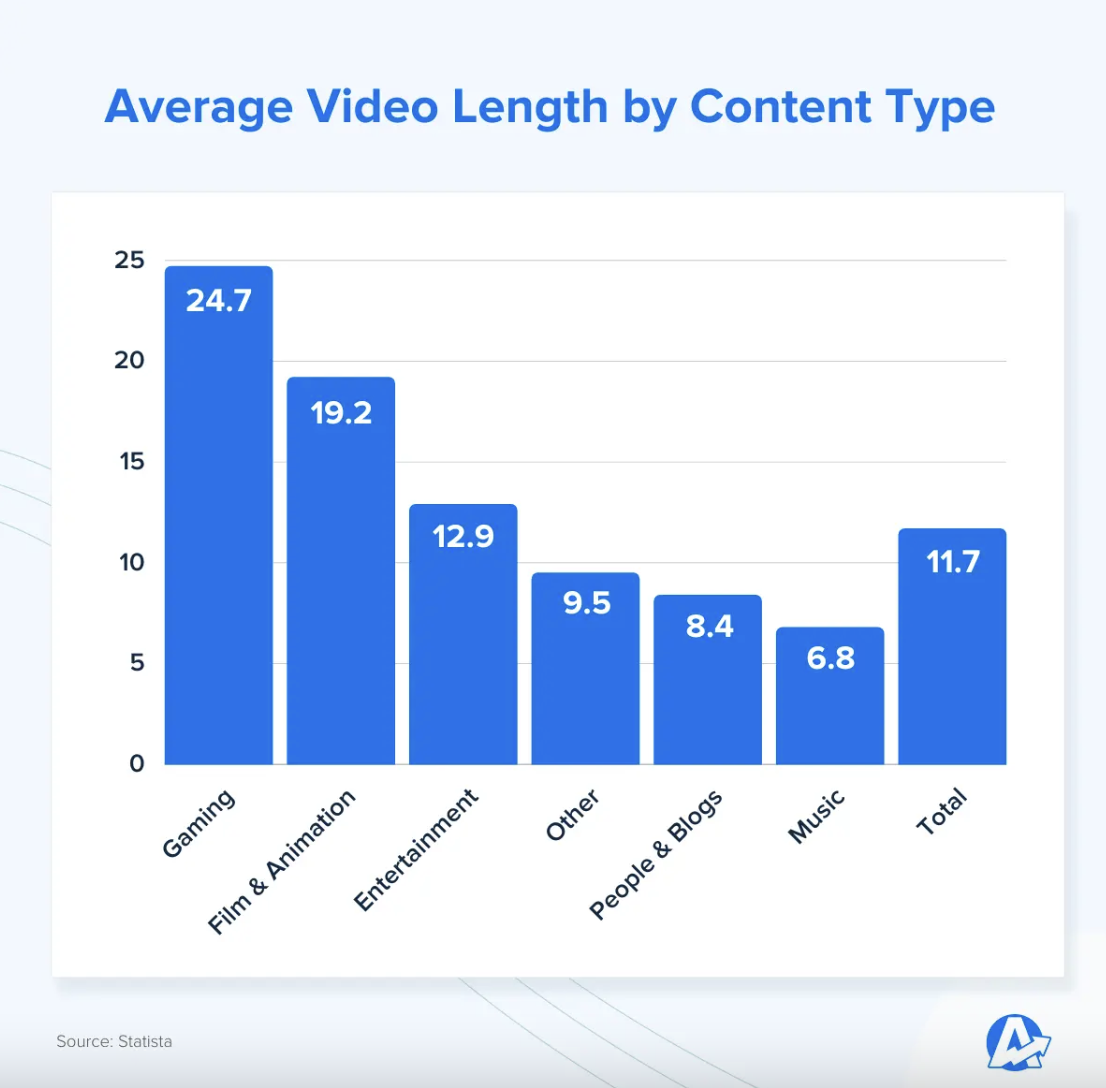
Although the average has been around 11-12 minutes for several years, blog content in a video format typically comes in at less than 9 minutes. A recent study by TechSmith showed that attention spans are shrinking, and most YouTube viewers prefer informational videos to be 3 to 4 minutes or 5 to 6 minutes in length.
5. Impress Your Audience With an Impeccable Intro
YouTube intro videos are brief opening sequences appearing before a site video. They often contain the name of the YouTube channel, brief history, animated bio, and any music that goes with them. Experts on YouTube advise against creating intros that are longer than 10 seconds.
Take Doctor Mike, YouTube’s medical phenomenon, as an example. He does a great job of explaining–in the first few seconds–precisely what you are about to watch in the first few seconds.
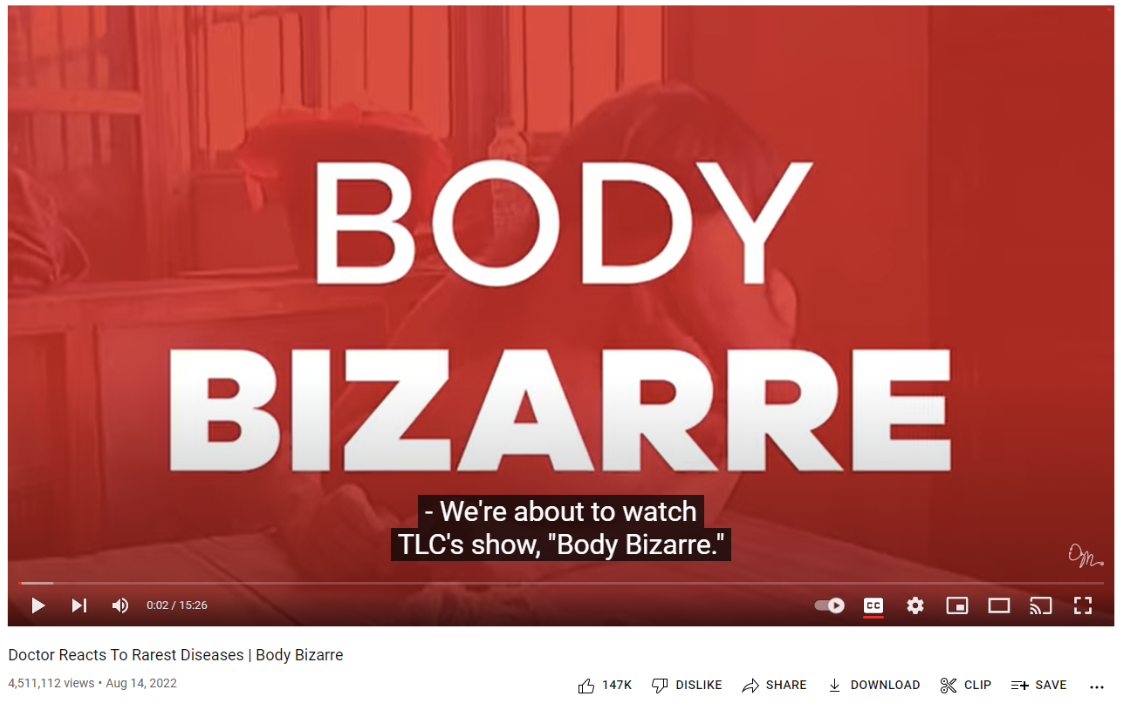
Initial impressions are crucial on YouTube. In video marketing, this is even more important because the audience gets to know you firsthand from your video only. If your video doesn't get the audience interested immediately, they probably won't watch it all the way through.
6. Delivering With the Strongest CTA
Any marketing content–including YouTube videos–should have a call-to-action (CTA). Most often, these fall at the end of the video and can be used to promote additional video content or off-YouTube resources such as further information on the topic or the product.
Using Doctor Mike as an example, you can see how he has created a cross-promotion to his other video, and a subscribe icon to encourage users to sign up for notifications about future videos.

Users may find it difficult to understand how to purchase a product or service without strong CTAs. The CTA should always be placed near the conclusion of your video to ensure smooth operation. Specify what your audience should do after watching the video with a strong CTA.
7. Interact With Your Audience
Interacting with your audience in the comment section will help you to enhance YouTube video engagement. Personal inquiries are not necessarily bad, so asking the audience about their preferences, tastes, and routines will help you get to know them better.
After all, people often love talking about themselves.
You will gain a deeper understanding of your audience and have more insight to create relevant content accordingly. Make sure that the question aligns with the video content and your brand.
8. Work Along With Other YouTube Artists and Brands
Partnerships are a great way to become part of the YouTube ecosystem. Either an expert from your business can join a popular YouTuber to discuss a topic where you have expert insights, or vice-versa.
The ultimate objective of a YouTube collaboration with another creator or brand is to persuade their audience to view your video content, so finding the right collaborator is essential for success. To increase the likelihood of brand recognition, partner with video creators with similar interests to your company, or a connection to your audience.
For example, if you’re company offers athletic footwear, partnering with a popular fitness expert is the perfect opportunity to align on the audience and the topic.
Additionally, you should evaluate the other person's audience to make sure they would enjoy your content. Suppose most of your content is geared toward middle-aged women in the USA, and the fitness guru you’re thinking about targets millennial males in Australia. In that case, it likely isn’t a match–no matter how many subscribers they may have.
Final Thoughts
These eight strategies will help drive higher levels of engagement for your YouTube videos and your channel s a whole. Remember to monitor your YouTube engagement metrics as you test these strategies. After all, what works for another company isn’t guaranteed to resonate with your audience.
The bottom line is that you must be consistent with your YouTube postings. Start with one video each week, and work your way up to two or three, based on the advice from digital marketing professionals.
Last but not least, don't worry about the critical comments and dislikes. Even the dislikes can boost viewership and traffic to the video. Hence, the naysayers can dislike your videos, but the YouTube algorithm is designed to drive more viewers to the video/channel. As the saying goes, ‘there is no such thing as negative publicity.’
Author Bio:
With over 20 years of experience in digital marketing, Paul Stainton is an expert at creating brand value through transformation and eCommerce strategies. He has extensive knowledge about go-to-market execution and demand generation within B2B and B2C Markets. He is currently the Director of Content and SEO at AgencyAnalytics, a client reporting platform built for marketing agencies.